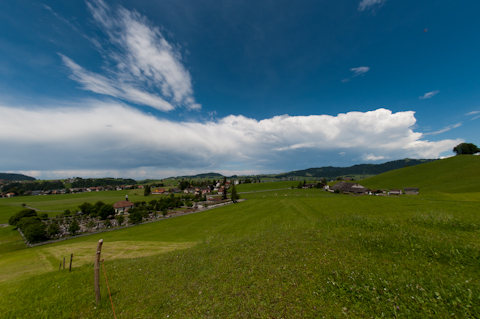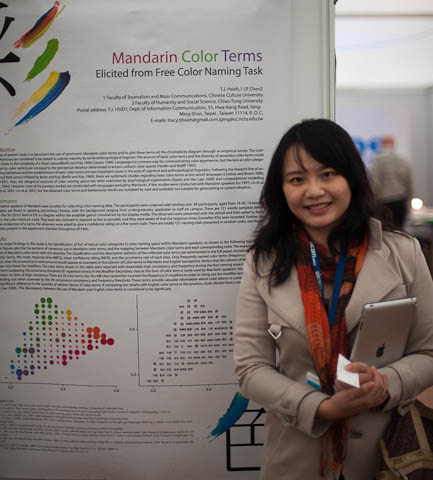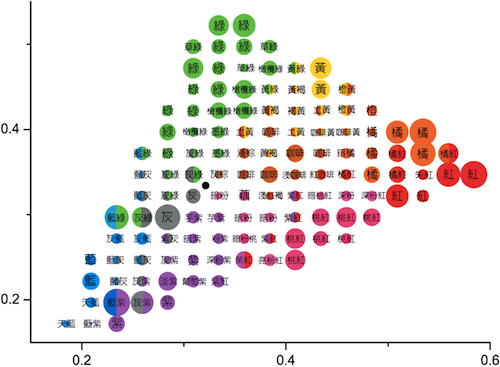
If you visit the European headquarters of the Mostly Color Channel (MCC), just a short 10 minute train ride with the Südostbahn (SOB) up the mountain takes you to Einsiedeln, which translates to hermitage.

Although Einsiedeln's lush landscape today consists of fat fields on which cows graze, filling the air with the tolling of their bells, in the year 835 when the hermit monk Meinrad from Reichenau settled here, it was a dense forest.

If you walk up to the St. Benedikt vista point shown above, you will have a beautiful view of the monastery. The original Benedictine monastery was built in 934, but the building you see today is the sixth replacement, whose construction began in 1704.

As the towers suggest, this is the view from behind. One of the tricks the architect liked to play, was that of perspective. What is the difference between the image above and the one below? 85 mm vs. 66 mm focal length and about 960 m vs. 939 m elevation.

Anyway, many people do not approach the abbey by SOB but on foot, because their motivation is not MCC but a spiritual journey. Indeed, Einsiedeln is one of the major monasteries on the Milky Way, or Jakobsweg as it is called here.
Milky Way is the old Roman name, when this was a trading route, because it followed the Milky Way to the Atlantic Ocean. Today is has become in fashion again and is often called by its Castillian name of El Camino de Santiago. The branch through Einsiedeln feeds from Austria and Milano and has an unusual feature in that it crosses the lake of Zurich with a footbridge just a meter or so above the water. From the bridge from Rapperswil to Hurdensteg, which is at 410 m, you climb straight up the mountain to cross the Etzel Pass at the chapel of St. Meinrad, which is at 950 m, and enjoy this view as you approach the monastery towards the Baroque and Rokoko abbey church (Klosterkirche):

Given this physical exertion, it is no wonder in front of the esplanade the pilgrims find the Lady Fountain (Marienbrunnen or Frauenbrunnen or Liebfrauenbrunnen) where they can enjoy some fresh alpine spring water.

The importance of the monastery becomes clear from all the gold used in its decorations.

Looking up the abbey, the building is quite imposing, which is very surprising considering we are in a small alpine village distant from the metropoles.

Ora et labora governs the day of the Benedictine monk, hence there are innumerable clocks and other time pieces everywhere.

The pilgrims are welcomed in front of the main door in a serious but warm atmosphere.

In general, the natives are quite friendly and do not mind posing for a tired wayfarer from half a world away, made poorer every day from the relentlessly dropping Dollar.

The most well known native of Einsiedeln was Paracelsus (1493–1541), the inventor of modern medicine and pharmacology. For now, let us get ready to sway from the Milky Way and make a detour to the original goal: the Midterm Meeting of the International Colour Association (AIC) at the Zurich University of the Arts.
















































